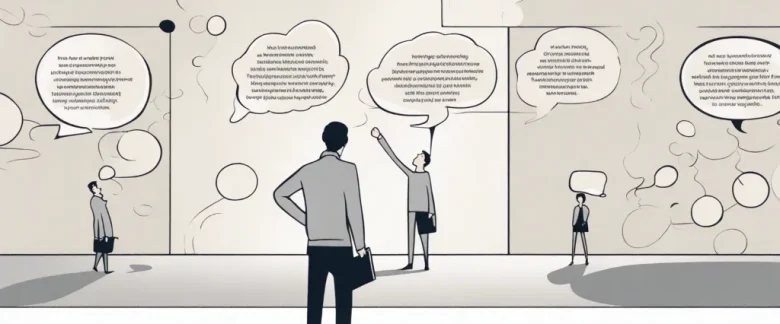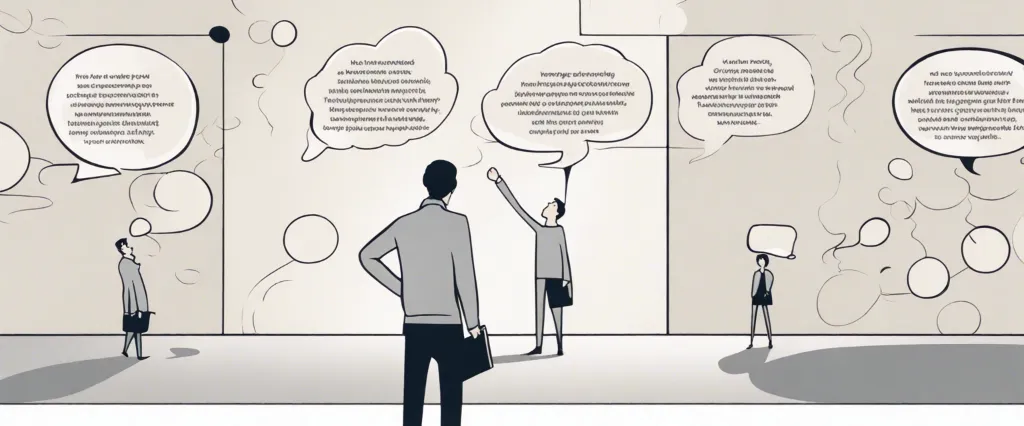In “HOOKED,” Nir Eyal presents an insightful exploration into the persuasive techniques employed by companies to create habit-forming products. As technology becomes increasingly integrated into our daily lives, understanding the psychology behind habit formation and manipulation is crucial for businesses to succeed. Eyal, an accomplished entrepreneur, investor, and behavioral design expert, draws upon his extensive experiences to provide practical strategies for product designers and marketers seeking to captivate consumers and build long-lasting engagement. Through his expertise, Eyal offers invaluable insights into the intricate workings of habit formation, helping businesses create products that keep users hooked.
Chapter 1: The Hook Model
Chapter 1: The Hook Model of the book “HOOKED” by Nir Eyal introduces the concept of how to create habit-forming products. Eyal argues that successful products and services are those that form habits, leading to repeat engagement and customer loyalty. He introduces the “Hook Model,” a four-step process that companies can follow to create habit-forming products.
The first step of the Hook Model is the trigger, which can be external or internal. An external trigger is a cue that prompts users to take action, such as a notification or an advertisement. An internal trigger is a feeling or emotion that motivates users to act, often a result of an unmet need. By understanding these triggers, companies can create products that provide solutions in a timely manner.
The second step is the action phase, where the user performs a simple behavior. This step aims to lower the bar for user engagement through easy, quick, and intuitive actions. The key is to make the user feel like they can achieve something with minimal effort.
The third step is the variable reward, which taps into the human desire for variability and surprise. Eyal explains that variable rewards prompt users to continue engaging with a product to seek further rewards. This can be achieved through a variety of means, such as the anticipation of a message response or the randomness of a slot machine.
The final step is the investment phase. Here, users contribute time, effort, data, or money to the product or service. By investing in the product, users strengthen their commitment and increase the likelihood of future engagement.
Eyal concludes the chapter by highlighting that successful habit-forming products provide value to users by attaching their services to the users’ pre-existing routines and emotions. While the Hook Model can be powerful, it is essential for companies to use it ethically, ensuring they support users’ well-being rather than exploit their vulnerabilities.
Chapter 2: Trigger
Chapter 2: Trigger of the book “Hooked” by Nir Eyal explores the importance of triggers in forming habits and creating addictive products. Triggers are cues that prompt users to take action, leading to the habitual and repeated use of a product or service.
The chapter begins by highlighting the role of external triggers, which are stimuli from the environment that prompt a specific action. These triggers can be in the form of notifications, emails, or visual cues that remind users to engage with a particular product. Eyal explains that these external triggers are effective in initiating user behavior, but they are not enough to create long-lasting habits.
To drive continued use and habitual behavior, the author introduces the concept of internal triggers. Internal triggers are emotions, thoughts, or situations that trigger certain actions. They often stem from internal psychological states, such as boredom, loneliness, or even seeking social connection. Rather than relying solely on external triggers, companies need to understand these internal triggers and design their products to address them effectively.
Eyal emphasizes that successful companies have a deep understanding of the internal triggers driving their users, allowing them to create experiences that provide relief or pleasure for these emotional states. By attaching their products to these internal triggers, companies can develop strong habits and customer loyalty.
The chapter concludes by highlighting the importance of aligning external triggers with internal triggers. By consistently linking the two, companies can create a seamless experience that prompts users to engage with their products whenever they experience the internal trigger.
In summary, Chapter 2 of “Hooked” emphasizes the crucial role of triggers in creating habits. Both external and internal triggers play a significant role in prompting user behavior, and companies must design their products to effectively address these triggers in order to cultivate long-term engagement and use.
Chapter 3: Action
Chapter 3 of “Hooked” by Nir Eyal focuses on the second step of the Hook Model, which is the Action phase. This chapter explores how to design products and services that nudge users to take the desired action, turning them into habitual users.
Eyal begins by explaining that motivation alone is not enough to drive user action; it also requires simplicity. He introduces the concept of the “Fogg Behavior Model,” which states that for an action to occur, three elements must converge: motivation, ability, and a trigger. Eyal emphasizes that the more effortless an action is, the more likely users are to engage with it. Therefore, product designers need to ensure that their products are user-friendly and require minimal effort to use.
He delves into the importance of reducing the cognitive load on users by making actions easier, such as by simplifying sign-up forms or providing one-click options. Eyal highlights the significance of creating delightful user experiences that make completing an action feel effortless and enjoyable.
The chapter also covers the role of variable rewards in driving repeated action. Eyal explains the power of intermittent reinforcement, a concept borrowed from behavioral psychology, where users receive rewards in unpredictable patterns, creating anticipation and driving further engagement.
He presents several design tactics to increase the likelihood of users taking action, including personalization, providing social proof, and employing scarcity and urgency to prompt immediate response.
Ultimately, Chapter 3 of “Hooked” underscores the importance of designing products and services that make desired actions as effortless and rewarding as possible. By understanding the psychology behind user behavior and implementing effective design strategies, companies can build habit-forming products that keep users coming back for more.
Chapter 4: Variable Reward

Chapter 4 of “Hooked: How to Build Habit-Forming Products” by Nir Eyal focuses on the concept of variable rewards, a critical component in creating addictive products. Eyal explains that variable rewards are the heart of why people get hooked on various services, products, and experiences.
The chapter begins with the example of the famous slot machines, known for their addictive nature. Slot machines are designed to deliver variable rewards, meaning the outcome is unpredictable. Sometimes users win big, sometimes they win small, and other times they lose. This unpredictability creates an enticing lure, keeping users coming back for more.
Eyal explains that the human brain is particularly vulnerable to variable rewards, as it triggers dopamine release, a neurotransmitter associated with pleasure and satisfaction. Variable rewards generate a sense of anticipation and excitement, leading to increased engagement and a desire to achieve the next reward.
The author then introduces the “Four Types of Variable Rewards,” which are defined as rewards of the self, rewards of the tribe, rewards of the hunt, and rewards of the self-expression. Rewards of the self refer to the user’s personal gratification, such as gaining knowledge or achieving a personal goal. Rewards of the tribe relate to social validation, recognition, and acceptance from others. Rewards of the hunt encompass the thrill of seeking and discovering something valuable. Lastly, rewards of self-expression involve the satisfaction of expressing oneself creatively or through personal tastes.
Eyal explains that successful products combine one or more of these variable reward types to drive user engagement. He emphasizes the importance of finding the right balance and ensuring the rewards are fulfilling and pleasurable for users, keeping them hooked without causing them harm.
In summary, Chapter 4 of “Hooked” explores the power of variable rewards in creating addictive products by stimulating the brain’s pleasure centers and triggering anticipation and excitement. The chapter introduces the Four Types of Variable Rewards and emphasizes the need to design rewards that fulfill users’ needs and desires, ultimately creating a habit-forming experience.
Chapter 5: Investment
Chapter 5 of “Hooked” by Nir Eyal is titled “Investment,” and it delves into how developers can deepen user engagement through the concept of investment.
Eyal begins by emphasizing that investments create preferences. When users put effort, data, or money into a product or service, they become more likely to stick with it due to their vested interest. This concept is backed by research on behavioral psychology and examples from successful companies like Facebook and Twitter.
The author discusses three types of investments: personal, public, and effort-based. Personal investments include any action that result in customization or builds upon personal data. Public investments involve users sharing their activities, preferences, or creations with others. Lastly, effort-based investments refer to the time and energy users dedicate to a product, such as learning new features or building a profile.
To encourage investment, developers need to provide users with triggers that prompt them to make these commitments. For example, Twitter asks users to follow a minimum number of accounts before letting them access their personalized timeline. This small expenditure of effort becomes a psychological trigger for future engagement.
Eyal also highlights two psychological biases that can amplify the effects of investment: the endowed progress effect and the IKEA effect. The endowed progress effect refers to our tendency to be more committed when we feel we’ve already made progress towards a goal. The IKEA effect is the increased value we place on products we contribute effort to create.
The chapter concludes with suggestions on how to facilitate users’ investment. Developers should employ techniques like asking for information, requesting effort, appealing to a user’s need for mastery, and ensuring consistent progress tracking.
In summary, Chapter 5 explores how investment is crucial to creating hooked users. By encouraging personal, public, and effort-based investments, companies can deepen user engagement and build preferences, ultimately increasing product retention and satisfaction.
Chapter 6: The Ethics of Manipulation
Chapter 6 of the book “Hooked” by Nir Eyal focuses on the ethics of manipulation. In this chapter, Eyal explores the line between ethical persuasion and unethical manipulation in the context of creating habit-forming products.
Eyal begins by emphasizing that manipulation is sometimes seen as inherently evil, but argues that it is not always negative. Instead, he suggests that we should consider the intention and outcome of the manipulation when evaluating its ethical implications.
The chapter highlights four factors that determine whether manipulation is ethical: consent, benefit, harm, and effort. Consent refers to obtaining the user’s permission to influence their behavior, and it is crucial to respect their autonomy. Benefit refers to the value the user receives from the product or service, which should ideally exceed any potential harm caused. Harm examines the negative consequences that may arise from the manipulation, and efforts should be made to minimize or address them. Finally, effort refers to users’ investment of time and energy, and products that require substantial effort to use may be less likely to manipulate.
Eyal acknowledges that there will always be disagreements regarding which manipulations are ethical, but he believes that providing users with choice and control over their engagement with the product is essential. Transparency and clear communication play important roles in ensuring users fully understand and consent to the intended manipulation.
To summarize, Chapter 6 explores the ethical aspects of manipulation in creating habit-forming products. It emphasizes the importance of obtaining user consent, providing benefit while minimizing harm, and allowing users to have control and choice in their interactions with the product. Eyal encourages designers to approach manipulation ethically by considering these factors and being transparent with their users.
Chapter 7: The Power of Habits
Chapter 7 of “Hooked: How to Build Habit-Forming Products” by Nir Eyal is titled “The Power of Habits.” In this chapter, Eyal explores the psychology behind habitual behaviors and how understanding them can help companies create addictive products.
The chapter begins by defining habits as automatic behaviors triggered by specific cues. Habits are formed through a loop of three components: a cue, a routine, and a reward. Eyal introduces the concept of the “habit loop” and highlights how successful companies embed their products within this loop to create user habits.
He delves into the neurological aspects of habits, explaining how they develop in the basal ganglia, a part of the brain responsible for automatic actions. Eyal emphasizes that habits are not simply formed by repeated actions, but rather by the anticipation of a reward. Therefore, to create a habit-forming product, companies need to provide rewards that are not only pleasurable but also variable and unpredictable.
Eyal discusses the importance of creating cravings in users to drive habitual behavior. By utilizing the design principles of triggering, action, and variable rewards, companies can increase the likelihood of habit formation. He presents examples of how successful companies like Facebook, Twitter, and Pinterest have effectively applied these principles to build habit-forming products.
Furthermore, Eyal raises ethical concerns associated with habit-forming products, cautioning companies to consider the potential harm they may cause to users. He emphasizes the importance of responsible product design and urges businesses to prioritize user well-being over profit motives.
In summary, Chapter 7 of “Hooked” explores the power of habits and how companies can leverage them to build addictive products. By understanding the psychology behind habit formation and incorporating design principles, companies can create products that keep users coming back for more. However, Eyal also highlights the ethical responsibility of businesses to consider the well-being of their users when developing habit-forming technologies.

Chapter 8: The Future of Habit-Forming Technology
Chapter 8 of the book “Hooked” by Nir Eyal focuses on the future of habit-forming technology and explores potential concerns and ethical considerations that arise with these types of products.
The chapter begins by highlighting the increasing role of technology in our lives, with new products designed to influence our behavior popping up regularly. Eyal emphasizes that while habit-forming technology can be powerful and beneficial, there are also potential downsides that need to be addressed.
Eyal introduces the concept of “temporal proximity,” which refers to reducing the time between users’ triggers and actions to create more instant gratification. He argues that this strategy has potential benefits, but it can also lead to addiction and negative consequences. To mitigate this, Eyal suggests building in on-demand access while giving users the option to delay or control their engagement.
Another concern discussed is the ethical responsibility of those creating habit-forming technology. Eyal argues that companies should have a moral obligation to help users live healthier, happier lives. He suggests incorporating features that encourage users to engage with healthier content and provide options for reducing usage or taking breaks.
Additionally, Eyal discusses the importance of being transparent about how these technologies work and collecting user feedback to continually improve them. He suggests adopting a user-centered approach that prioritizes their well-being over maximizing profit.
Overall, the chapter explores the need for ethical guidelines and responsible design principles when creating habit-forming technology. Eyal emphasizes that by being mindful of potential negative consequences and incorporating user feedback, companies can create products that enhance users’ lives without crossing ethical boundaries.
After Reading
In conclusion, “Hooked” by Nir Eyal offers a comprehensive exploration of the psychology behind habit-building technologies and how they captivate our attention. The book outlines a four-step model called the Hook Model which explains the mechanics behind addictive products and provides practical suggestions for product developers to create habit-forming experiences. Eyal emphasizes the ethical responsibility of companies in using these tactics and encourages readers to be mindful of their own digital behaviors. Overall, “Hooked” offers valuable insights into the mechanisms of habit formation and serves as a guide to understand and navigate the increasingly pervasive presence of technology in our lives.
1. Atomic Habits: An Easy & Proven Way to Build Good Habits & Break Bad Ones” by James Clear
– Like “Hooked,” this book explores the psychology behind habits and provides practical strategies for creating and maintaining positive behaviors. It offers a step-by-step approach to understanding how habits are formed and how to make lasting changes.
2. Nudge: Improving Decisions About Health, Wealth, and Happiness” by Richard H. Thaler and Cass R. Sunstein
– Similar to “Hooked,” this book delves into the concept of behavioral economics and how individuals can be nudged towards making better choices. It explores the ways in which small changes in decision-making environments can lead to significant improvements in various aspects of life.
3. “Influence: The Psychology of Persuasion” by Robert B. Cialdini
– This classic work focuses on the principles of influence and persuasion. It provides valuable insights into the techniques used by marketers, salespeople, and others to sway decision-making. It is a fascinating exploration of the psychological triggers that can lead to certain behaviors.
4. The Power of Habit: Why We Do What We Do in Life and Business” by Charles Duhigg
– Exploring the science of habit formation, this book, like “Hooked,” highlights the importance of understanding how habits are created and sustained. It offers practical advice on how to transform habits and create positive change in various aspects of our lives, whether personal or professional.
5. Thinking, Fast and Slow” by Daniel Kahneman
– This best-selling book by Nobel laureate Daniel Kahneman dives into the two cognitive systems that drive our thinking processes: the intuitive, fast-thinking system and the analytical, slow-thinking system. It explores how these systems shape our decisions, including the biases and errors that can influence us. Understanding these mechanisms can help us better navigate our choices and avoid falling into common traps.




